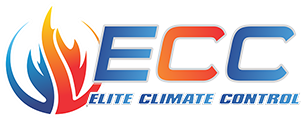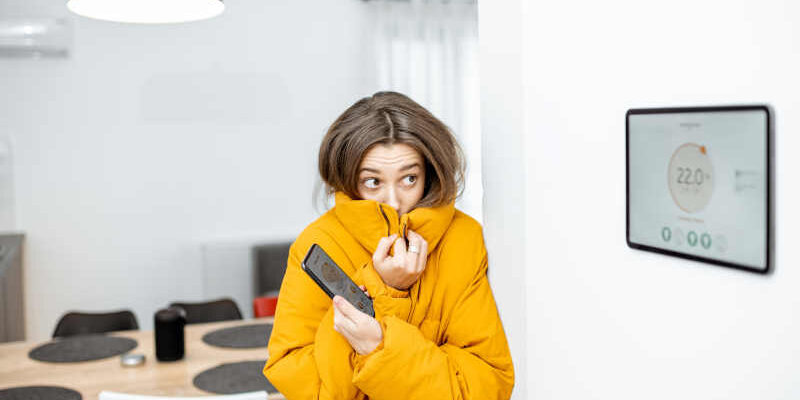There are a few choices available in Southern California for heating homes:
- Install a gas furnace: Gas furnaces use natural gas as their fuel source to create heat through combustion.
- Install a heat pump: they don’t produce heat on their own. Instead, they bring heat energy from the outside into the house.
- Install a dual-fuel system: The major heating system for the house is a heat pump. A propane furnace system begins to operate when the temperature drops below a predetermined level.
Each of the three aforementioned methods has advantages and disadvantages, and none is the optimal option in every situation. This blog aims to assist you in selecting the best system for your needs by considering variables like:
- Installation fees up front
- Savings in costs over time
- Typical wintertime temperatures
- Overall comfort
Never hesitate to contact our professionals at Elite Climate Control if you have any questions at any time. Our comfort consultants’ only goal is to assist you in selecting the ideal system for your house based on the aforementioned considerations.
Installation Fees Up Front
When professionally installed, heat pumps and furnaces have different upfront prices. The most cost-effective alternative is a furnace if all you need is a heating system. However, the heat pump (which combines both heating and cooling into one system) is your best option if you also need a cooling system.
Average installation costs demonstrating the advantages of a heat pump
- Installing an AC and furnace together costs around $9,000.
- Installing a heat pump typically costs around $6,500.
The expense of establishing a new gas line may be another cost issue that affects furnace installations. It could cost several hundred dollars to $1,000 or more to install a gas connection in your home.
That includes the price of installing a furnace and a heat pump. How much would a dual-fuel system cost, though?
A dual fuel system, then, employs a furnace as well as a heat pump. You should expect to pay just over $10,000 for both systems based on standard prices. Nevertheless, a number of variables, including:
- Your house already has a heat pump installed.
- You’ve already put a furnace in your house.
- Both systems are already installed; all that is left to do is to tweak them so they can cooperate.
Savings in costs over time also needs to be evaluated. Consider the long-term operating costs of each system when determining whether a heat pump or furnace is the best choice for your home.
Additionally, the longevity and fuel expense of the system should be considered.
- System lifespan: You’ll save more money over time if you can put off replacing your system. Furnaces are the definite winners in this case. The lifespan of a furnace is 15 to 20 years. Heat pumps typically last 10 to 15 years.
- Fuel costs: Using natural gas to power a furnace is typically less expensive than using electricity to operate a heat pump. This is particularly true in colder climates when a heat pump’s electric heat strip is needed to maintain comfortable indoor temperatures.
Heating for Typical Wintertime Temperatures
The cost of operating a typical heat pump can soar when the temperature drops to the mid-30s or lower. This is because at these temperatures, heat pumps are unable to pull enough heat from the outside air into your house. An electric heating strip turns on to make up for this and generates enough heat to warm the house.
Cost is the issue, as we mentioned earlier. These electric heating strips use a lot of energy and are far less energy-efficient than a natural gas furnace. This is the point at which investing in a furnace or dual-fuel heat pump system truly starts to pay off.
How frequently do temperatures in the mid- to low-thirties occur in the Inland Empire? Well, it’s not unusual for wintertime temperatures in some parts of Southern California to drop below 35 degrees. There are a few nights each year when the temperature drops below freezing in cities like San Bernardino and Victorville.
Consult a technician at Elite Climate Control if you need assistance determining whether a dual system is the best option for you. We’ll outline the potential energy savings from a dual system for you, and you can decide whether the investment is justified.
Comfort for the Whole Family
Heat pumps circulate warm air throughout the house at 90 to 100 degrees. Those who are used to furnace settings, which produce heat in the 130 to 140 degree range, may find these temps to be downright frigid.
The furnace’s higher temperatures work best when placed near cooler areas. However, some families simply favor one person’s feelings to the other. Nevertheless, a knowledgeable technician can assist you in finding the answers to any questions you may have regarding the heat output of either of these systems.
Unable to decide? Make a call to Elite Climate Control!
An Elite Climate Control comfort specialist can assist you in choosing the best furnace, heat pump, or combination of both for your house.




